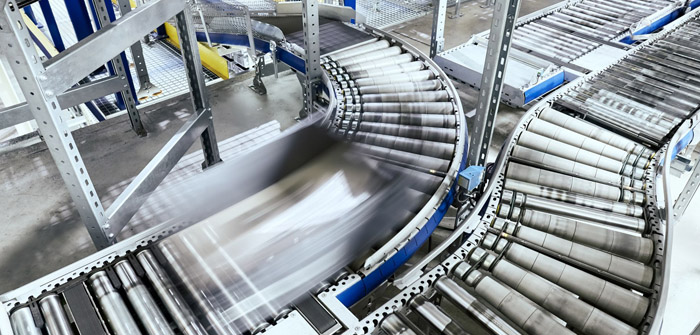In any industry that uses conveyor belts, the whole system has to stop when a component needs replacement. With operations at a standstill, you incur business losses. It can be costly when maintenance is a scheduled event, but when replacements are unplanned, that’s when it becomes even pricier. But there are effective ways to cut costs and keep the conveyor system in excellent working condition.
Conveyor systems must be given appropriate care to extend their longevity and keep operations running smoothly. The following are steps you can take to prolong their use.
- Follow The Maintenance Plan
When there’s a comprehensive maintenance plan in place for your conveyor belts, it’s possible to optimize operations in the assembly or packaging line. Your maintenance personnel should be meticulous in utilizing checklists and calibration methods.
Furthermore, train your personnel to be adequately acquainted with the sights and sounds of parts showing strain and how to test these components correctly. Conveyor systems may include a drum motor or a mag-drive, which are essential parts of the machine that need looking after. Read the full post to understand more about these motorized pulleys and magnetic drives.
As part of the maintenance plan, you must also record the deterioration of the components before they cause problems in the system. There should be regularly scheduled maintenance as well as one for outages. Planning an outage every two months is ideal as it allows thorough cleaning and inspection of the conveyors and the conveyor drives.
- Select The Right Conveyor
Conveyor systems are different and are used for various purposes. That means there should be a proper conveyor belt for every specification. Investing in a conveyor belt also involves considering the following factors:
- Preferred speed and direction of movement of the product
- Weight of the product
- Need for weighing, sorting, or metal detection
Seeking the advice of experts in a conveyor manufacturing company could help you identify the conveyor that’s suited for your product and application. You can also acquire a conveyor that has multiple uses or features. Such units enable an increase in production while minimizing the wear and tear of the conveyor.
- Keep A Stock Of Spare Parts
When your conveyor system is in operation day in and day out, it’s inevitable that some components will eventually get worn out and need to be replaced. Not having the specific spare part on hand could cause an indefinite delay in production, especially if it would take days or weeks to procure the needed component.
Being able to identify the components that are routinely replaced is a must for your maintenance personnel. They should keep an organized inventory of common replacement parts such as puller plates, bearings, and nuts. This is particularly convenient if your conveyor system is an old model and its spare parts may be hard to obtain.
To reduce equipment downtime, optimize your workforce, especially those who are using and monitoring machinery.
- Make Regular Daily Inspections
When a conveyor belt breaks, it likely began having issues a few days or weeks ago. The breaking down of conveyor systems might be attributed to neglect since daily checking would help identify concerns before they progress.
A daily inspection should be a part of the routine. Trained personnel should pay close attention to the components that break down the fastest. It’s also helpful to ensure that spare parts are on hand to make repairs quickly.
The following need regular monitoring:
- Conveyor belt
- Bearing lubrication
- Sensors
- Chain tension
- Pulley alignment
- Guards
- Excess vibration at the shafts, rollers, and motors
Keeping an eye out on these components and immediately addressing concerns makes the system less likely to break down.
- Track Pressure Of Pneumatic Systems
There are various types of conveyor systems, including those operated through pneumatic means. It means these systems are controlled by gas or air under pressure. Pneumatic systems should have correct regulator pressure adjustments and flow control adjustments to ensure the longevity and optimal function of the devices. Also, they should be frequently inspected and adjusted accordingly.
The air line pressure leading to the components should not exceed the pressure required to perform the correct operation within the ideal time frame. The production of too much pressure is expensive and causes parts to deteriorate faster. Furthermore, your maintenance personnel should ensure there’s no water buildup within the lines that could hamper the operation of the pneumatic devices.
In Conclusion
Conveyor systems are an essential part of mechanical handling equipment. It’s responsible for transporting materials from one area to another. Conveyor systems must always be working correctly in any large-scale industry, especially at factories or warehouses operating 24/7/365. Without proper maintenance, these systems will break down, costing businesses more than they realize.





